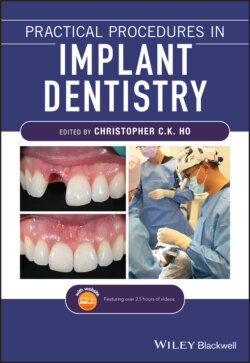Читать книгу Practical Procedures in Implant Dentistry - Группа авторов - Страница 32
3.1.2 Guided Surgery
ОглавлениеProsthetic planning has evolved to allow virtual implant planning. CT and CBCT imaging have facilitated advances in the treatment planning of dental implants as the information can now be transferred to implant‐planning software to digitally plan the case. This is achieved by merging CBCT and intra‐oral scans, allowing clinicians to perform virtual tooth and implant placement, and even to perform guided surgery (Figure 3.3). These computer‐aided design (CAD) programs are used to fabricate surgical templates which are manufactured by either stereolithography (SLA) or 3D printing. In a recent systematic review, Tahmaseb et al. [4] identified 24 clinical and preclinical accuracy studies involving nine different static surgical guidance systems. Meta‐analysis of the accuracy related a total mean error of 1.12 mm (maximum of 4.5 mm) at the entry point of the osteotomy and 1.39 mm at the apex (maximum of 7.1 mm). The angular difference between planned and obtained position was 3.53 degrees (maximum of 21.16 degrees). Although the average accuracy was quite acceptable it was reported that there were significant errors as demonstrated by the maximum errors. These are mainly due to the potential for the templates to not fit correctly or move during placement. The use of guided surgery should therefore be attempted with care, with special attention to accurate template fitting prior to use. The most accurate templates have been tooth‐supported templates, whereas bone‐supported templates have been reported to have the highest inaccuracy [4]. Further development is required to improve the accuracy of static surgical guidance systems.
Figure 3.3 Guided surgery in a full arch implant rehabilitation.
Further technological advances have led to the launch of dynamic surgical navigation (e.g. X‐Guide™; X‐Nav Technologies) in which real‐time surgery is guided using computer software and delivers interactive information to improve the precision and accuracy of implant positioning.
